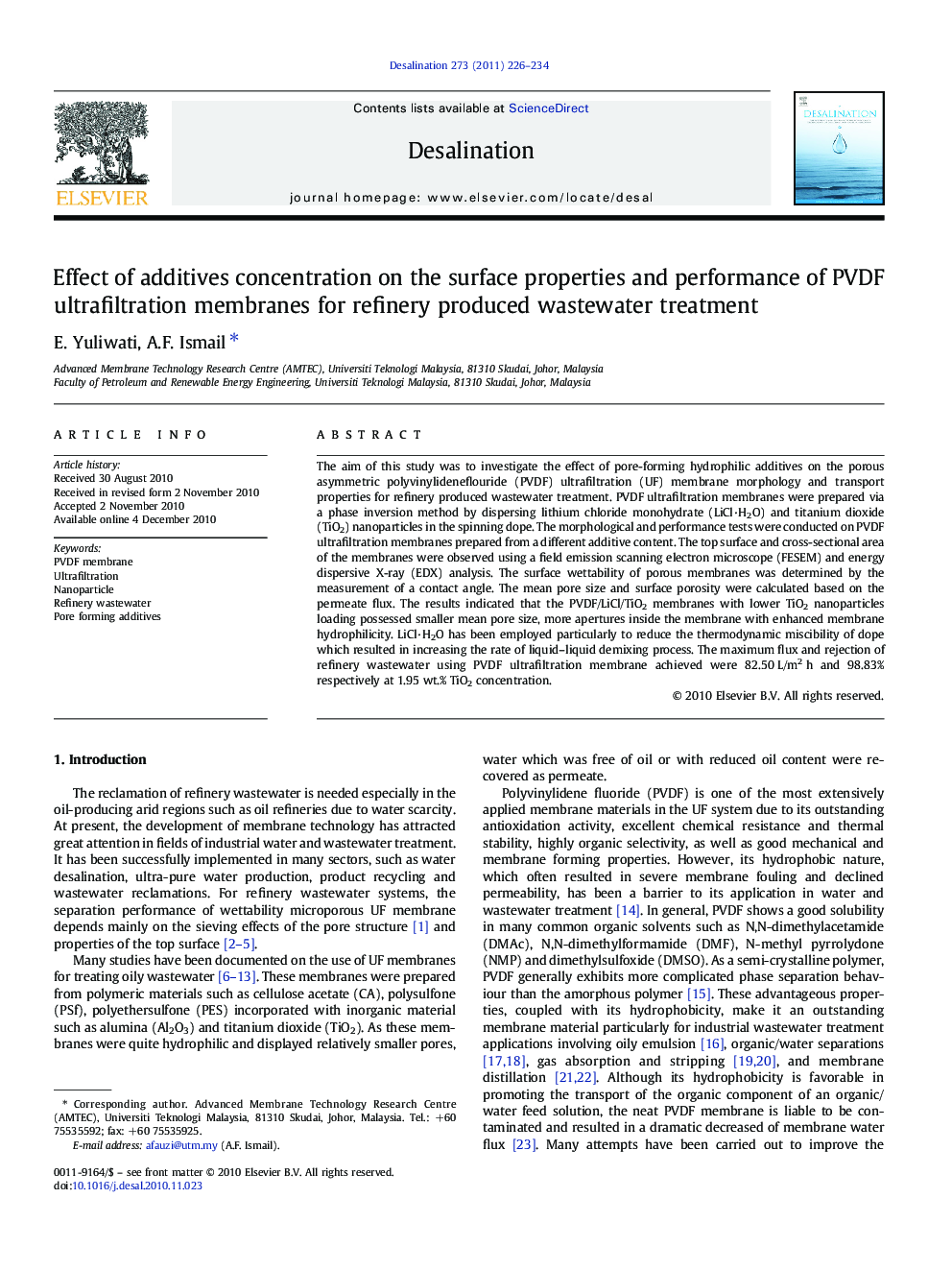| Article ID | Journal | Published Year | Pages | File Type |
|---|---|---|---|---|
| 625197 | Desalination | 2011 | 9 Pages |
The aim of this study was to investigate the effect of pore-forming hydrophilic additives on the porous asymmetric polyvinylideneflouride (PVDF) ultrafiltration (UF) membrane morphology and transport properties for refinery produced wastewater treatment. PVDF ultrafiltration membranes were prepared via a phase inversion method by dispersing lithium chloride monohydrate (LiCl·H2O) and titanium dioxide (TiO2) nanoparticles in the spinning dope. The morphological and performance tests were conducted on PVDF ultrafiltration membranes prepared from a different additive content. The top surface and cross-sectional area of the membranes were observed using a field emission scanning electron microscope (FESEM) and energy dispersive X-ray (EDX) analysis. The surface wettability of porous membranes was determined by the measurement of a contact angle. The mean pore size and surface porosity were calculated based on the permeate flux. The results indicated that the PVDF/LiCl/TiO2 membranes with lower TiO2 nanoparticles loading possessed smaller mean pore size, more apertures inside the membrane with enhanced membrane hydrophilicity. LiCl·H2O has been employed particularly to reduce the thermodynamic miscibility of dope which resulted in increasing the rate of liquid–liquid demixing process. The maximum flux and rejection of refinery wastewater using PVDF ultrafiltration membrane achieved were 82.50 L/m2 h and 98.83% respectively at 1.95 wt.% TiO2 concentration.
Research Highlights►TiO2 in PVDF UF promotes higher hydrophilicity, small pore size and high porosity. ►Higher TiO2 concentration leads to an aggregate phenomenon and pore blockage. ►Higher membrane hydrophilicity and small pore size significantly enhanced flux. ►Higher flux of refinery wastewater is achieved by using PVDF/LiCl/TiO2.
